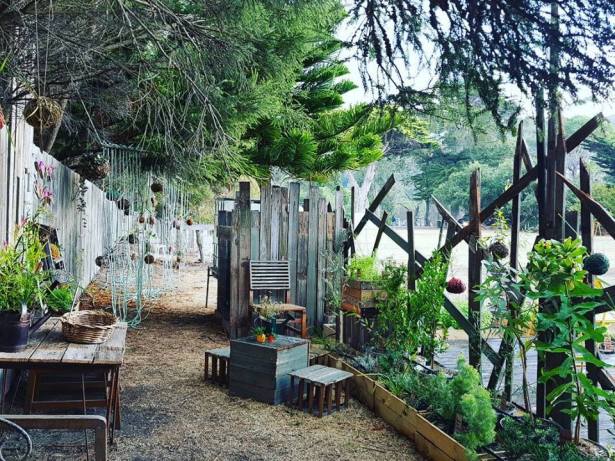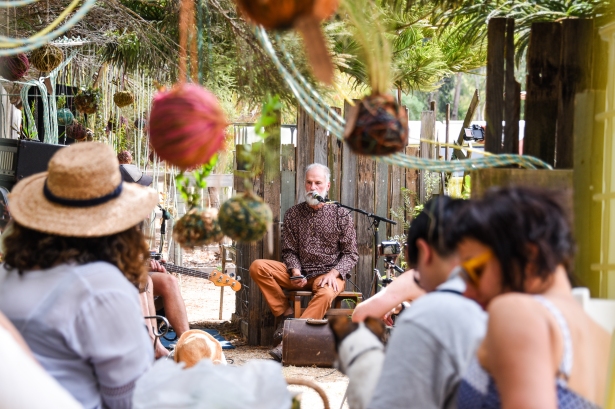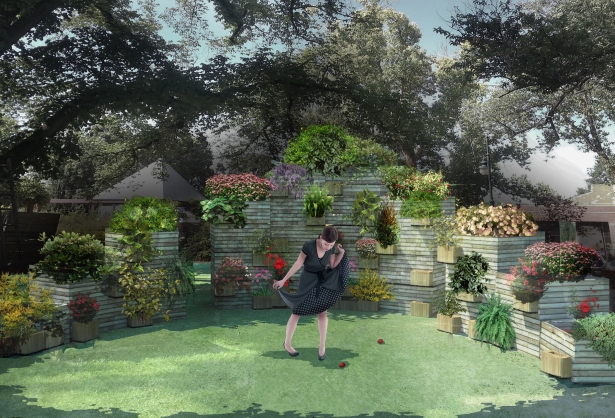By tanjabeer
In 2014, I published an article in the Blue Pages entitled, “Green Is the New Blackâ€[1], highlighting the opportunities that sustainability can bring to the performing arts. I wrote about the possibilities of ecological design that were already emerging, including bicycle-powered shows, edible stages and body suits that captured kinetic energy. At the time, sustainability and theatre was a fringe phenomenon. While stage designers all over the world were beginning to heed the call of environmentally-conscious practices, the performing arts as a whole was proving slow to embrace the challenge.
With the global climate crisis taking hold and the global pandemic enforcing a pause in our practices, times have certainly changed in 2020. The topic of theatre and sustainability has rapidly moved to the fore. We are seeing more and more artists and organisations using the stage as a platform to talk about climate change and being pro-active in considering how theatre is made for the benefit of humans and nature. Sustainability has emerged as a significant part of many high-profile platforms both in programming and practice.
Climate change theatre is emerging as a genre in its own right. In 2019, in my home city of Melbourne alone, every theatre organization appeared to have at least one ecological work on show or in development. It was an exciting and welcome change.
Yet I can’t help thinking back to the time, not so long ago, when the word ‘sustainable’ was met with glazed eyes or even disdain in theatre circles. A time when many of us were forced to do sustainability ‘undercover’, subverting the status quo with what little means we had. A time when our only choice was to frame sustainable decisions around budgets and aesthetics in order to get them across the line.
Ultimately, I moved outside of the theatre building to pursue change. There were too many barriers and pitstops for many of us who were attempting to go down the sustainable path. It was lonely being out there on the curb. Our sustainable practices (even when done ‘on the downlow’) were an inconvenience for most theatre companies, directors and stage managers. We wanted the ‘s’ word to be celebrated, not a ‘conversation stopper’ or a hidden practice that was kept behind closed doors.
In stepping outside of traditional theatre, I was free to imagine new modes of practice and aesthetics – those that demonstrated how sustainability could be inspiring, provocative and celebratory. I wanted to show that stage designers could be contributors and change agents. To push against those long held assumptions of sustainability: that ecological design is expensive, boring, time consuming and limiting of high-quality aesthetics. I wanted to demonstrate that the mixing of theatre and sustainability could contribute to what I believe will be the next great wave of artistic activism – shining a light on environmental injustice, provocating for change and re-awakening environmental stewardship as a core human ethos.
It was the last of these aspirations, in particular, that prompted me to start The Living Stage project in 2013. The Living Stage is a global ecoscenography project that combines stage design, horticulture and community engagement to create recyclable, biodegradable, edible and biodiverse performance spaces. Part theatre, part garden and part food growing demonstration, The Living Stage is a celebration of what is possible when we embrace the potential of ecological practice holistically. At the end of the performances, living stages are returned to the communities that helped grow them. Physical structures become garden beds and community spaces; plants become healthy food; and waste becomes compost.
Since making its debut at the Castlemaine State Festival (Australia) in 2013, the concept has travelled to Cardiff, Glasgow, Armidale, New York, Lorne and Melbourne. As each living stage evolves out of a direct response to the localities of site, ecology and community, no project is ever the same. Yet they share clear commonalities: the celebration of multisensory elements, effective and multi-level engagement with audiences, and a legacy that stretches on long after the final performance.
The Living Stages are only a small example of what is possible when we embrace ecological potential. I am a strong believer that sustainability makes us better designers. Performance designers all around the world are showing us how aesthetically compelling environmentally-focused work can be, both in and beyond mainstream theatre. And importantly, audiences are taking notice. Sustainability with a capital ‘S’ is here. Emerging designers and directors are speaking out against unsustainable practices and their voices are being heard. The power is shifting. The age of theatre as place of eco-provocation, innovation and leadership is here.

For more information about Ecoscenography, see my recent talk with Aberystwyth University here.
[1] Beer, Tanja (2014). “Green Is the New Blackâ€. Blue Pages: Journal for the Society of British Theatre Designers, no. 1: 14-16.
Photos: Tanja Beer & Gisela Beer
(Top photo: The Living Stage Lorne, 2018)
The post, Ecological design futures: Ecoscenography in the age of climate change, appeared first on Ecoscenography.
———-
Ecoscenography.com has been instigated by designer Tanja Beer – a PhD candidate at the University of Melbourne, Australia, investigating the application of ecological design principles to theatre.
Tanja Beer is a researcher and practitioner in ecological design for performance and the creator of The Living Stage – an ecoscenographic work that combines stage design, permaculture and community engagement to create recyclable, biodegradable and edible performance spaces. Tanja has more than 15 years professional experience, including creating over 50 designs for a variety of theatre companies and festivals in Australia (Sydney Opera House, Melbourne International Arts Festival, Queensland Theatre Company, Melbourne Theatre Company, Arts Centre) and overseas (including projects in Vienna, London, Cardiff and Tokyo).
Since 2011, Tanja has been investigating sustainable practices in the theatre. International projects have included a 2011 Asialink Residency (Australia Council for the Arts) with the Tokyo Institute of Technology and a residency with the Royal Central School of Speech and Drama (London) funded by a Norman Macgeorge Scholarship from the University of Melbourne. In 2013, Tanja worked as “activist-in-residence†at Julie’s Bicycle (London), and featured her work at the 2013 World Stage Design Congress (Cardiff)
Tanja has a Masters in Stage Design (KUG, Austria), a Graduate Diploma in Performance Making (VCA, Australia) and is currently a PhD candidate at the University of Melbourne where she also teaches subjects in Design Research, Scenography and Climate Change. A passionate teacher and facilitator, Tanja has been invited as a guest lecturer and speaker at performing arts schools and events in Australia, Canada, the USA and UK. Her design work has been featured in The Age and The Guardian and can be viewed at www.tanjabeer.com
Powered by WPeMatico





